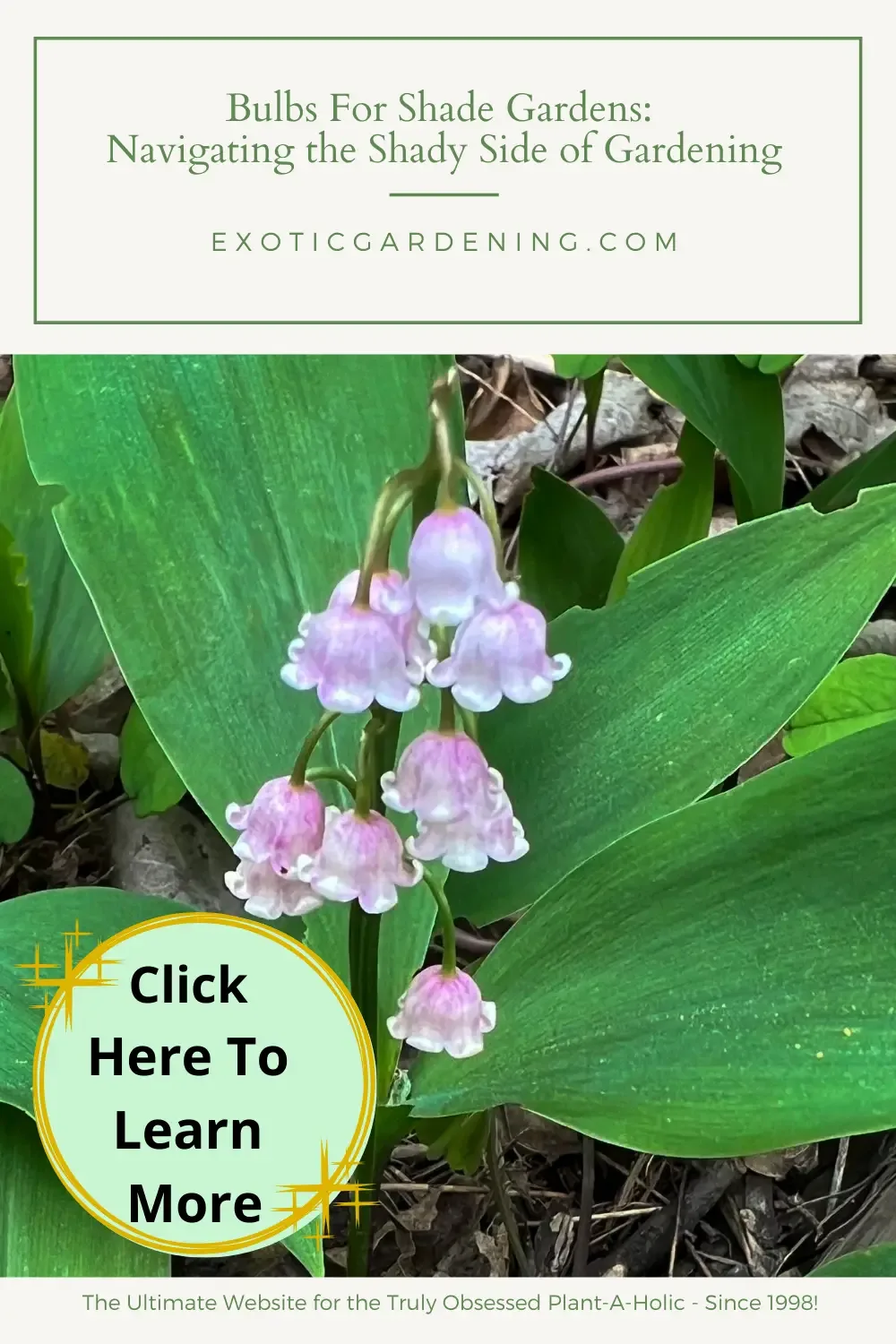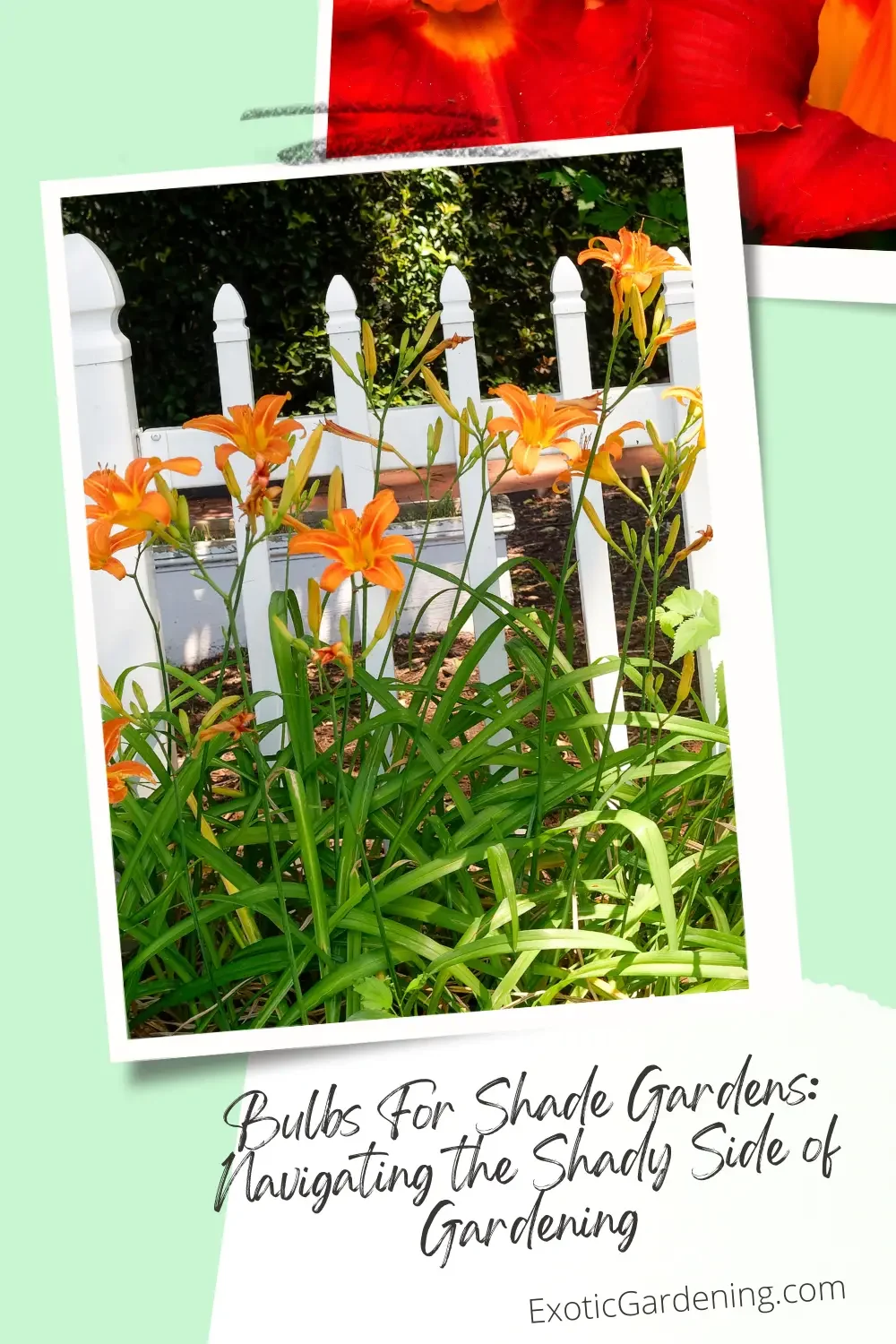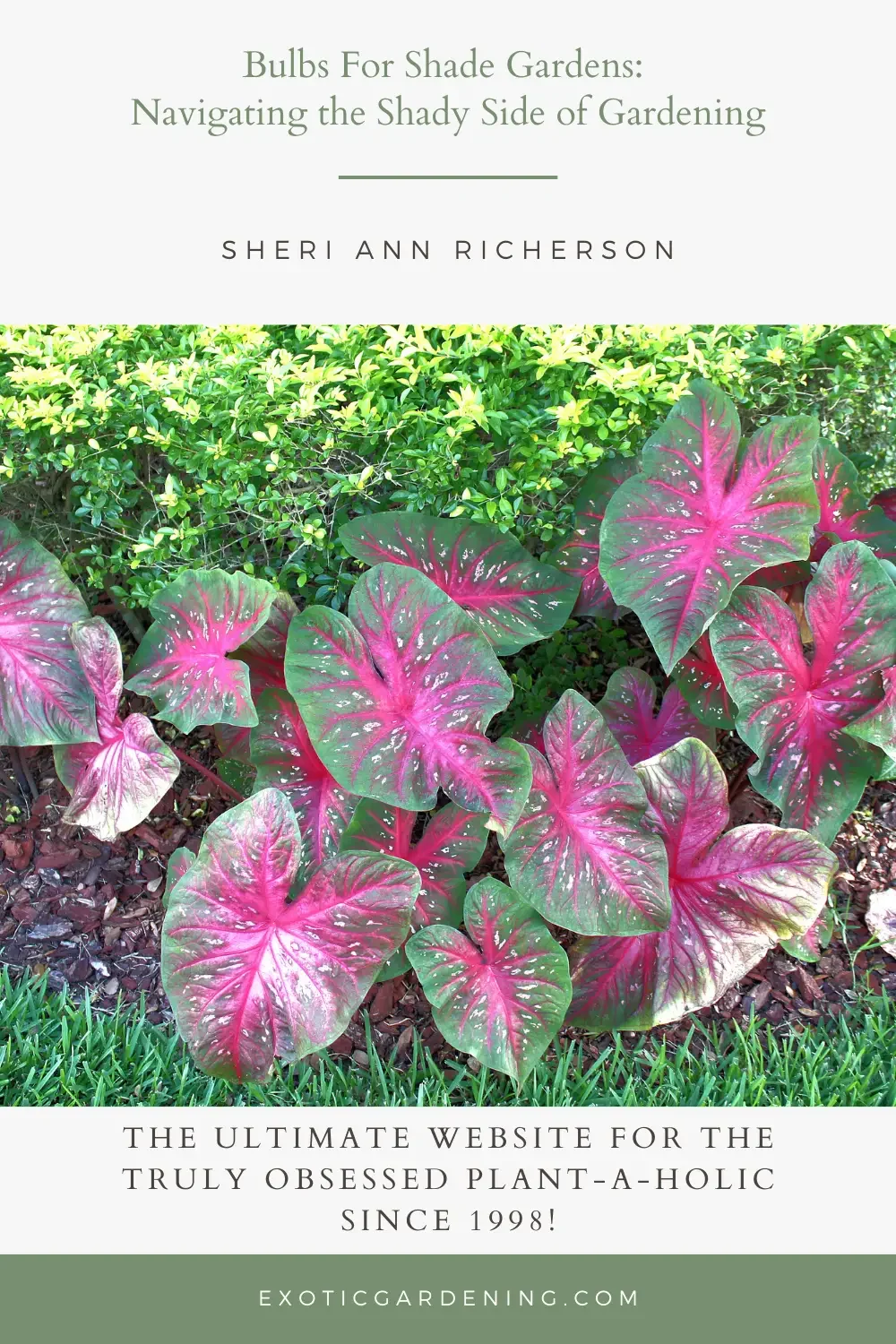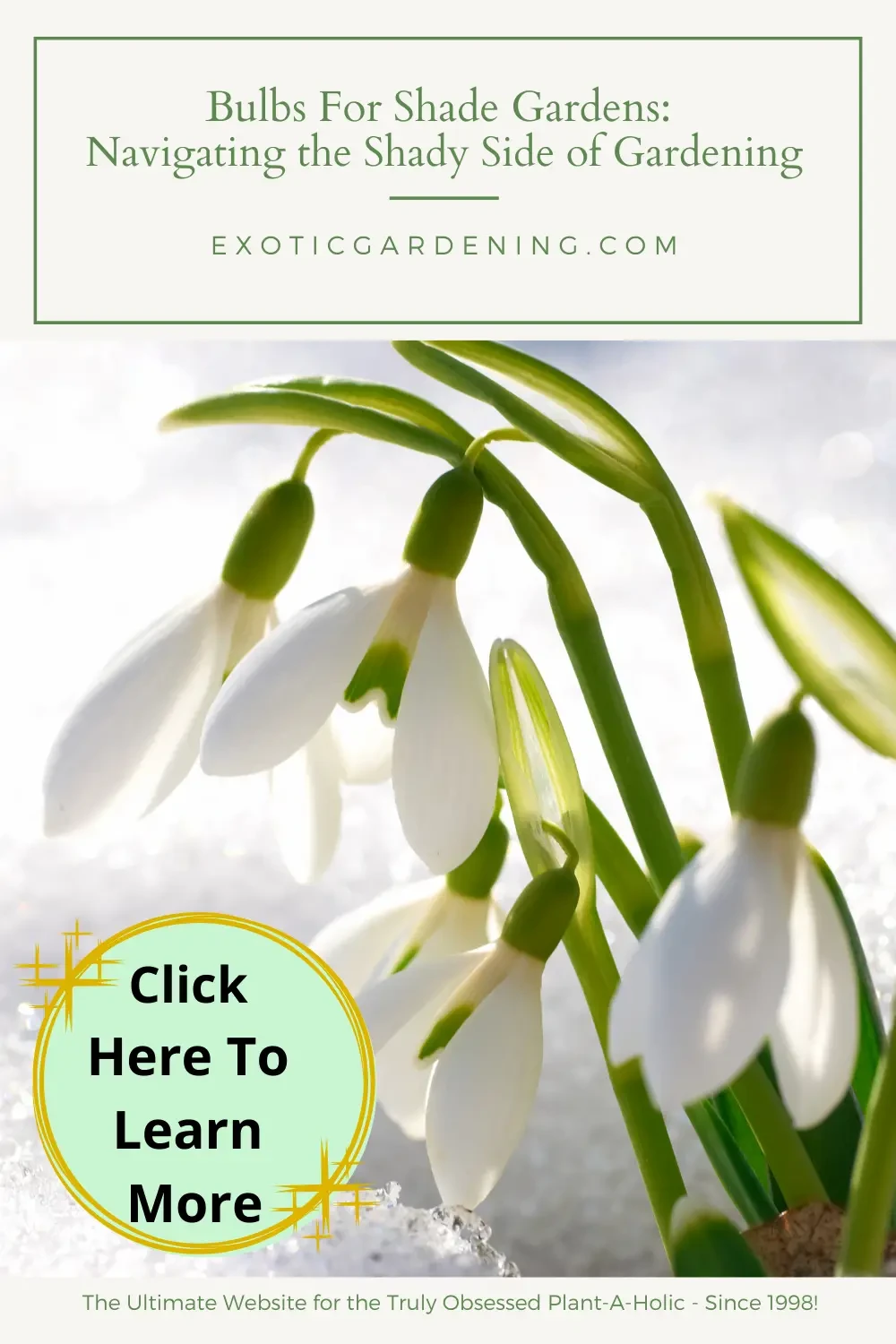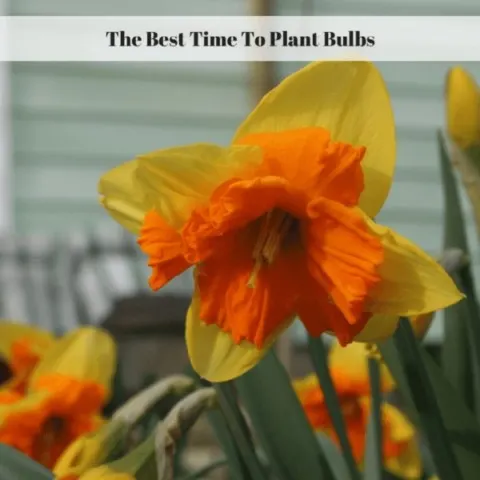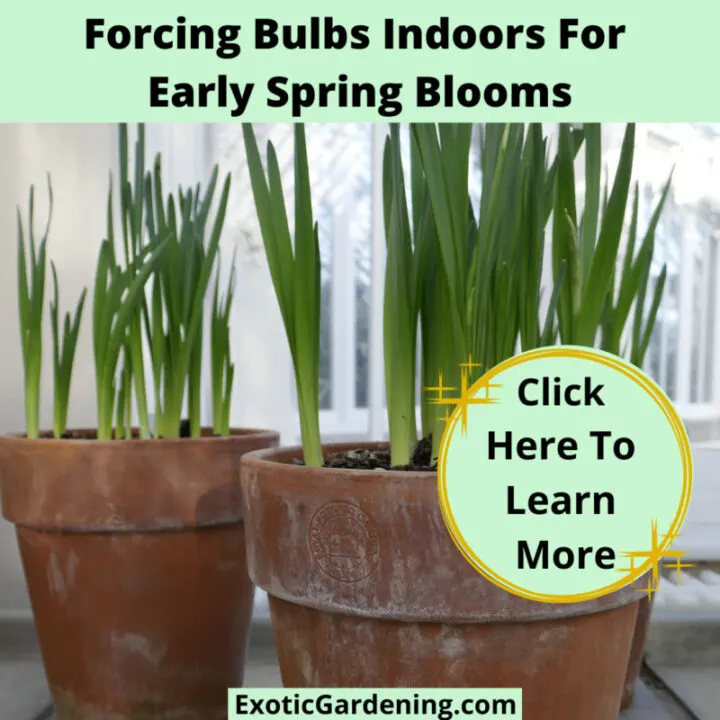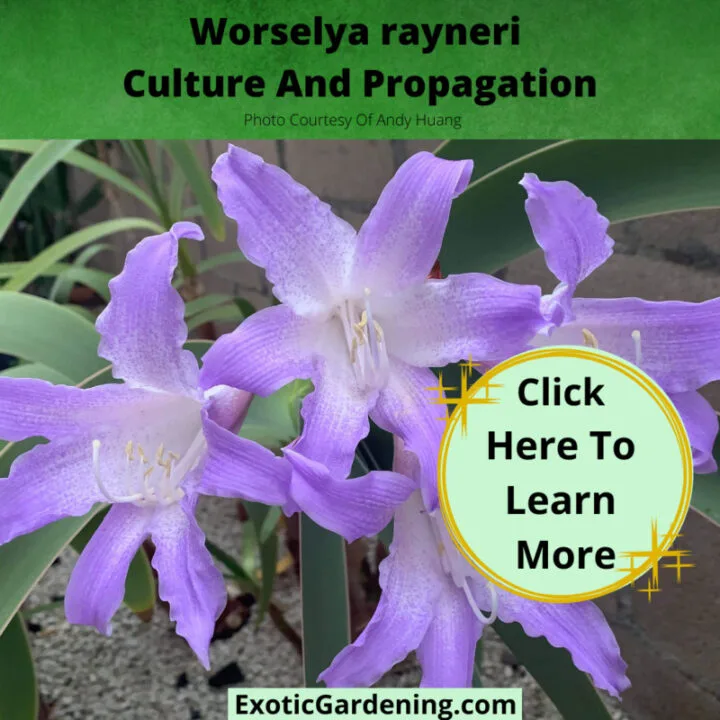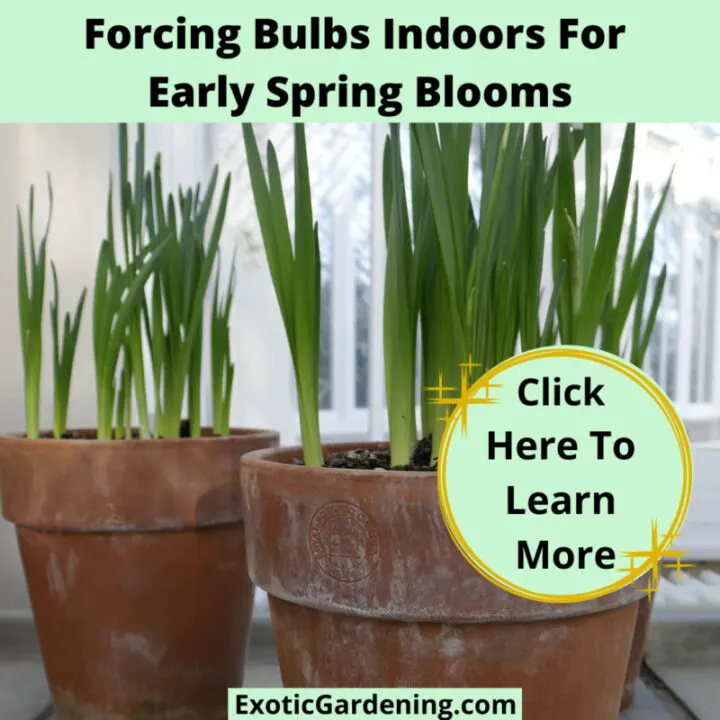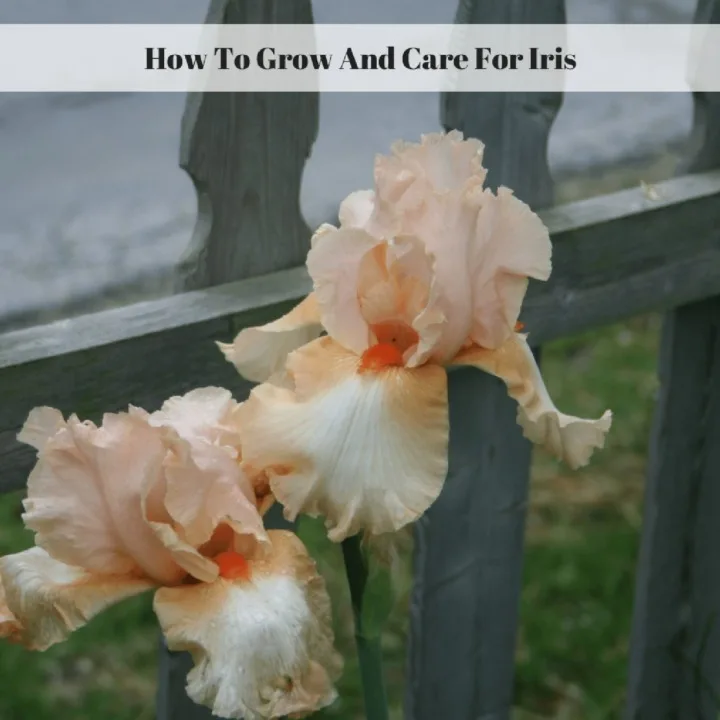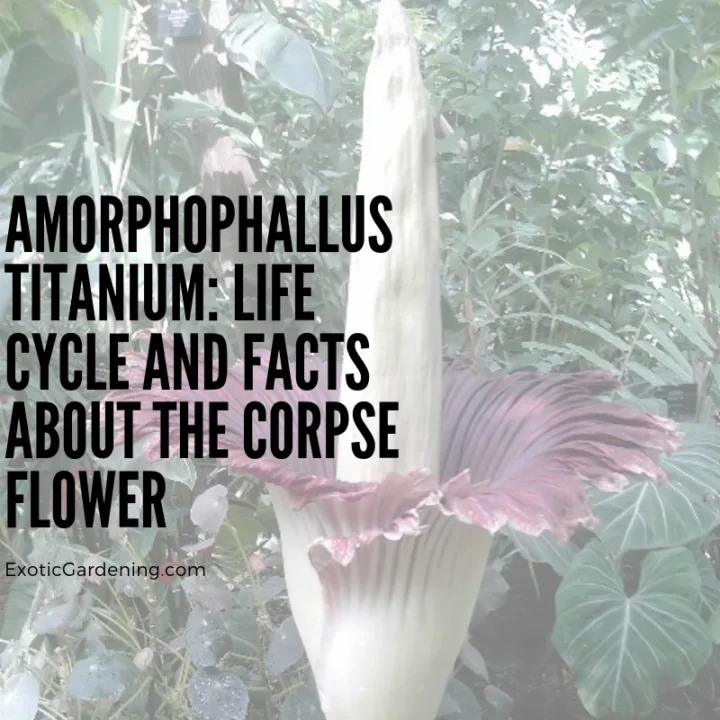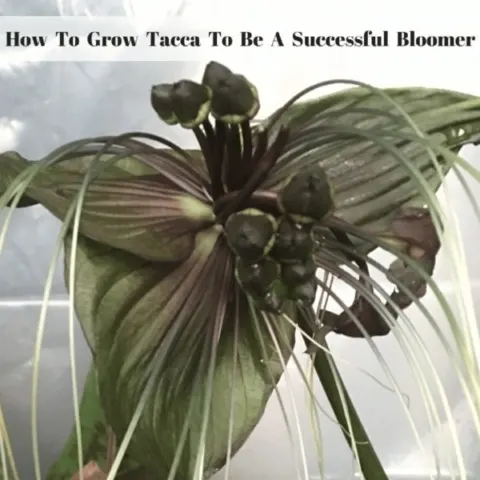You know, gardening in the shade can be a bit like solving a puzzle, especially if you are looking specifically for bulbs for shade gardens.
Many of the plants we typically associate with gardens crave their daily dose of sunlight.
But fear not!
There's a whole world of bulbs, rhizomes and tubers out there that not only tolerate the shade but thrive in it, bringing life and color to those often overlooked garden corners.
Hand-Picking Shade-Loving Stars
Among these shade-loving bulbs, one standout is Lycoris.
These bulbs are a true spectacle, available in a dazzling array of colors.
From the softest yellows and pinks to vibrant reds, and pure whites, they're like nature's paint palette.
When you plant them in groups, it's like watching a masterpiece unfold right in your shaded haven.
Spring's Delights: Lily-of-the-Valley and Cyclamen
Now, when late winter or early spring graciously graces your garden with its presence, it's time to roll out the green carpet for two of my personal favorites: lily-of-the-valley and cyclamen.
These delightful plants are like the heralds of spring in the shaded corners of your garden.
First up, we have lily-of-the-valley, a true gem of the spring garden.
What's so wonderful about them is that they come in a variety of options.
You can choose between single or double blooms, and they elegantly flaunt their beauty in shades of pristine white or the softest of pinks.
Imagine little bells gently swaying in the breeze, filling your garden with their sweet, delicate fragrance.
It's like nature's own perfume, and it's truly enchanting.
But that's not all – these dainty blooms are known for their resilience, thriving in those lower light conditions that shade gardens provide.
They're like the early risers of your garden, bringing their charm when others are just starting to stretch their petals.
Now, let's talk about cyclamen, another spring superstar.
These elegant plants are like a breath of fresh air in the garden.
With their uniquely shaped blossoms and distinctive foliage, they add a touch of sophistication to your shaded paradise.
The flowers come in various shades, from pure white to rosy pinks and deep purples.
It's like they're painting your garden with a palette of pastels.
What's remarkable about cyclamen is their adaptability to lower light conditions.
While other plants might be craving the spotlight, cyclamen thrive in the subtle, dappled light of your shaded garden.
They're like the cool, collected artists who prefer the quiet studio over the bustling city.
So, when spring arrives, make sure you have a spot reserved for these charming companions.
They'll sprinkle your garden with their unique beauty and remind you that even in the shade, there's a world of wonders waiting to unfold.
Daylilies: The Shade-Friendly Showstoppers
Now, if you're looking to inject some vibrant hues into your shaded garden, daylilies are your ticket to a colorful spectacle.
Especially those wild orange varieties – they're a real showstopper.
Whether you fancy the doubles or singles, these hardy beauties can turn the area under a massive tree into a burst of life and vivid colors.
It's like a secret garden party under the leafy canopy!
Caladiums: Nature's Artists
Let's chat about Caladiums, shall we?
These aren't your run-of-the-mill garden plants.
Nope, they're nature's own artists, creating living masterpieces in the shade.
If you're anything like me, drawn to the magic of contrasting colors, you'll fall head over heels for Caladiums.
They're like the Picassos of the plant world, transforming dull, shady spots into vibrant canvases teeming with life.
Imagine this: you've got a beautiful tree offering cool, calming shade, but the ground below is, well, a tad lackluster.
That's where Caladiums step in.
Nestle them beneath that tree, and suddenly, it's like Mother Nature threw a confetti party on your garden floor!
Their multicolored leaves dance in the dappled light, creating a spectacle that's pure enchantment.
But here's the twist: while they're busy painting your garden with colors, Caladiums have a quirk.
They can thrive outdoors, but unless you're in the lucky zones 9 to 10, think of them as your seasonal friends.
Enjoy their colorful show for the season, and bid them adieu until next year!
Or, if you're determined to keep their artwork going, scoop up those tubers when the growing season ends and give them a cozy spot indoors for the winter.
Another option is to simply store the tubers over winter in a cool, dark place just like you would cannas or elephant ears and replant them come spring.
It takes a bit of effort, but trust me, the payoff is worth every bit of TLC.
Galanthus: A Snowy Delight in Late Winter
Now, let's chat about Galanthus, those adorable snowdrops that are like nature's way of saying, "spring is just around the corner!"
These charming bulbs are a true delight in late winter, often daring to bloom when patches of snow still blanket the ground.
Picture this: a landscape still hushed in the grip of winter, yet here they are, these little snowdrops, peeking through the frosty white, as if to say, "we're here to bring a touch of warmth to your heart."
It's like a tiny miracle amidst the chilly silence.
What makes snowdrops even more enchanting is the variety they bring to the garden.
The flowers come in a captivating array of shapes, each one with its own personality.
Some are like delicate bells, while others resemble graceful water droplets hanging from a leaf. Each bloom is a testament to the intricate artistry of nature.
Now, here's the fun part – Galanthus has a penchant for naturalizing.
This means that once you plant them, they'll happily multiply and return year after year, like old friends coming back for a visit.
It's a sight to behold when they carpet a garden bed, creating a sea of delicate white blossoms.
While you might associate these beauties with collector's gardens in England, they also thrive right here in the US.
They're like a little piece of English garden magic that you can bring to your own backyard.
So, as the winter winds down and the snow begins to melt, keep an eye out for those precious snowdrops.
They're like the first whispers of spring, a promise that nature's grand show is about to begin.
A Handy Cheat Sheet of Shade-Loving Bulbs
Just in case you're assembling your gardening shopping list, here's a handy cheat sheet of other shade-loving bulbs that can harmoniously coexist in your garden:
- Begonia
- Erythronium
- Fritillaria
- Galanthus (those adorable snowdrops)
- Hyacinthoides (or, as I like to call them, the bluebells)
- Leucojum (the delicate snowflakes)
- Muscari (those charming grape hyacinths)
- Narcissus (the daffodils)
- Scilla (the lovely squill)
Year-Round Garden Magic
To craft a garden that keeps the show going year-round, let's draft a little plan:
- For a Splash of Spring: Plant Narcissus, Cyclamen, and Fritillaria. Imagine the drama of a black Fritillaria alongside vibrant yellow Narcissus and the delicate white or pink Cyclamen – spring's symphony of colors!
- Summer's Transition: As spring blooms fade, introduce Begonias, Lilium, and Caladiums. These additions bring not only more vibrant colors but also provide a clever cover for the departing spring blooms.
- Fall's Transformation: Embrace the change of seasons by coaxing Cyclamen into a second bloom as fall approaches. Opt for fresh bulbs since the spring ones need a little downtime. A bold red variety pairs perfectly with the hues of autumn foliage. And don't forget Lycoris, a fall-blooming marvel that can close the seasonal curtain in style.
- A Touch of Late Fall or Early Spring: To stretch your garden's colorful tale into late fall or early spring, consider planting a few Hellebores. While they're not technically bulbs, these winter-blooming plants play beautifully with bulbs and ensure your garden remains a year-round delight.
So, in conclusion, don't be discouraged by the shade.
With a little bulb savvy and some thoughtful planning, your garden can be a masterpiece of color and life all year round.
Nature's palette is vast and diverse, and with these shade-loving bulbs, you'll paint your garden with a touch of magic.
And just in case you are wondering when to plant these bulbs, check out our handy blog post on the best time to plant bulbs - and if you miss the perfect time, do not be discouraged.
As long as the ground is workable - and the bulbs are still firm to the touch, you can go ahead and plant them!
What's your favorite shade-loving bulb, and how has it transformed your garden?
Let's share stories and gardening wisdom!
Shade-Loving Bulbs: Your Comprehensive FAQ Guide
Q: What are the key factors to consider when growing bulbs in shaded areas?
A: When planting bulbs in the shade, focus on selecting shade-tolerant varieties, ensuring proper soil preparation, and providing adequate moisture.
Q: Can I grow bulbs in deep shade, or do they need some sunlight?
A: While most shade-loving bulbs prefer dappled or filtered sunlight, there are a few plants that can thrive in deep shade, such as lily-of-the-valley and some types of ferns.
Q: How do I prepare the soil for shade-loving bulbs?
A: It's essential to improve soil drainage and fertility by adding organic matter like compost or well-rotted leaf mulch. Bulbs generally prefer well-draining, loamy soil.
Q: When is the best time to plant shade-loving bulbs?
A: Fall is typically the ideal time for planting shade-loving bulbs. This allows them to establish roots before the growing season. The exception being bulbs such as caladium, canna, and elephant ears if you do not live in a warm climate.
Q: Can I plant shade-loving bulbs in spring?
A: It's possible to plant some shade-loving bulbs in spring, but fall is generally recommended for better results. Bulbs that bloom in spring typically need to chill over winter. You can do this yourself by putting the bulbs in the refrigerator crisper for 6 to 8 weeks, then planting them.
Q: What are some popular shade-loving bulb varieties for spring blooms?
A: Lily-of-the-valley, cyclamen, and snowdrops are excellent choices for early spring blooms in shaded areas.
Q: Which bulbs are suitable for summer color in the shade?
A: Caladiums, begonias, and some types of daylilies can provide vibrant summer colors in shaded gardens.
Q: Are there any fall-blooming bulbs for shaded areas?
A: Yes, consider planting fall-blooming bulbs like Lycoris for a burst of color as autumn approaches.
Q: How do I care for shade-loving bulbs during the winter months?
A: In colder climates, mulch the bulb beds to protect them from frost. Lift and store tender bulbs indoors if necessary.
Q: Can I grow shade-loving bulbs indoors or in containers?
A: Yes, many shade-loving bulbs can thrive in containers or as indoor houseplants, providing you with year-round beauty. Please be aware there are both florist cyclamen - which are typically grown as a houseplant indoors in colder climates and hardy cyclamen, which is what is discussed in this article.
Q: What's the difference between bulbs, corms, and tubers for shade gardening?
A: Bulbs, corms, and tubers are different types of underground storage structures for plants. Each has unique characteristics but can be used in shade gardens.
Q: Do shade-loving bulbs require regular fertilization?
A: While these bulbs don't need excessive fertilization, it's beneficial to provide a balanced, slow-release fertilizer in the spring.
Q: How do I prevent pests and diseases from affecting my shade-loving bulbs?
A: Maintain good garden hygiene, keep the area clean, and monitor for common pests and diseases. Promptly address any issues you observe.
Q: Can I plant shade-loving bulbs under trees?
A: Yes, many shade-loving bulbs thrive under the canopy of trees, as long as you ensure they receive some indirect light.
Q: What are some creative design ideas for shade gardens using bulbs?
A: You can create visual interest by planting bulbs in clusters, blending different varieties for a continuous bloom, or incorporating them with other shade-loving plants for a harmonious garden design.
Bulbs and Rhizomes
Dive into the fascinating world of bulbs and rhizomes with our curated collection of blog posts! Whether you're a seasoned gardener or just starting your journey, you'll find everything you need to plan, plant, and care for these stunning plants. From classic spring favorites like tulips and daffodils to summer showstoppers like gladiolus and cannas, our posts cover a wide variety of blooms to suit any garden style.
Learn how to choose the best bulbs and rhizomes for your region, plant them at the right time, and care for them season after season. With expert tips on soil preparation, watering, and pest resistance, you’ll be equipped to create a garden that’s vibrant and thriving.
Explore the endless possibilities and let these versatile plants bring bursts of color and texture to your garden year-round. Start planning your dream garden today!
Daylilies: Attractive, Colorful, Easy To Grow Garden Gems
Daylilies are popular garden plants that are colorful, easy to grow and multiply rapidly. They are also drought tolerant.
Worselya rayneri Culture And Propagation
Learn how to grow, flower and propagate the endangered plant, commonly known as the Empress Of Brazil, Worseyla rayneri.
How To Grow Amaryllis
Learn how to grow Amaryllis from seed as well as how to care for your Amaryllis plant indoors and what to do with it after flowering.
Bulbs to Plant In January: Get a Head Start on Cut Flower Production
Plant bulbs in January in a heated greenhouse to get a head start on cut flower production. Then interplant herbs, vegetables and annuals.
Spring Flowering Bulbs: The Cutting Garden
Plant spring flowering bulbs in the greenhouse or even indoors in February and March for gorgeous blooms in spring or mid-summer.
Forcing Bulbs Indoors For Early Spring Blooms
Forcing bulbs indoors is a great way for those without greenhouses to have flowers in bloom during the winter months.
Blooming Brilliance: Mastering Spring-Flowering Bulbs in Hot Climates
Discover the secrets of coaxing bulbs to bloom in hot climates. Get expert tips for vibrant, resilient floral displays.
Brighten Your Garden This Spring With Miniature Daffodils
Brighten your garden this spring with miniature daffodils! Discover their vibrant colors, unique varieties, and easy-care charm.
How To Grow And Care For The Albuca Species
Learn how to grow and care for the Albuca species. While most people start with a live plant, seed starting information is also included.

